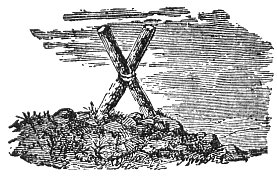p. 526
Masonry is a worship; but one in which all civilized men can unite; for it does not undertake to explain or dogmatically to settle those great mysteries, that are above the feeble comprehension of our human intellect. It trusts in God, and HOPES; it BELIEVES, like a child, and is humble. It draws no sword to compel others to adopt its belief, or to be happy with its hopes. And it WAITS with patience to understand the mysteries of Nature and Nature’s God hereafter.
The greatest mysteries in the Universe are those which are ever going on around us; so trite and common to us that we never note them nor reflect upon them. Wise men tell us of the laws that regulate the motions of the spheres, which, flashing in huge circles and spinning on their axes, are also ever darting with inconceivable rapidity through the infinities of Space; while we atoms sit here, and dream that all was made for us. They tell us learnedly of centripetal and centrifugal forces, gravity and attraction, and all the other sounding terms invented to hide a want of meaning. There are other forces in the Universe than those that are mechanical.
Here are two minute seeds, not much unlike in appearance, and two of larger size. Hand them to the learned Pundit, Chemistry, who tells us how combustion goes on in the lungs, and plants are fed with phosphorus and carbon, and the alkalies and silex. Let her decompose them, analyze them, torture them in all the ways she knows. The net result of each is a little sugar, a little fibrin, a little water–carbon, potassium, sodium, and the like–one cares not to know what.
We hide them in the ground: and the slight rains moisten them, and the Sun shines upon them, and little slender shoots spring up and grow;–and what a miracle is the mere growth!–the force, the power, the capacity by which the little feeble shoot, that a small worm can nip off with a single snap of its mandibles, extracts from the earth and air and water the different elements, so learnedly catalogued, with which it increases in stature, and rises imperceptibly toward the sky.
One grows to be a slender, fragile, feeble stalk, soft of texture, like an ordinary weed; another a strong bush, of woody fibre, armed with thorns, and sturdy enough to bid defiance to the winds: the third a tender tree, subject to be blighted by the frost, and looked down upon by all the forest; while another spreads its
p. 527
rugged arms abroad, and cares for neither frost nor ice, nor the snows that for months lie around its roots.
But lo! out of the brown foul earth, and colorless invisible air, and limpid rain-water, the chemistry of the seeds has extracted colors–four different shades of green, that paint the leaves which put forth in the spring upon our plants, our shrubs, and our trees. Later still come the flowers–the vivid colors of the rose, the beautiful brilliance of the carnation, the modest blush of the apple; and the splendid white of the orange. Whence come the colors of the leaves and flowers? By what process of chemistry are they extracted from the carbon, the phosphorus, and the lime? Is it any greater miracle to make something out of nothing?
Pluck the flowers. Inhale the delicious perfumes; each perfect, and all delicious. Whence have they come? By what combination of acids and alkalies could the chemist’s laboratory produce them?
And now on two comes the fruit–the ruddy apple and the golden orange. Pluck them–open them! The texture and fabric how totally different! The taste how entirely dissimilar–the perfume of each distinct from its flower and from the other. Whence the taste and this new perfume? The same earth and air and water have been made to furnish a different taste to each fruit, a different perfume not only to each fruit, but to each fruit and its own flower.
Is it any more a problem whence come thought and will and perception and all the phenomena of the mind, than this, whence come the colors, the perfumes, the taste, of the fruit and flower?

Moe is the founder of GnosticWarrior.com. He is a father, husband, author, martial arts black belt, and an expert in Gnosticism, the occult, and esotericism.





